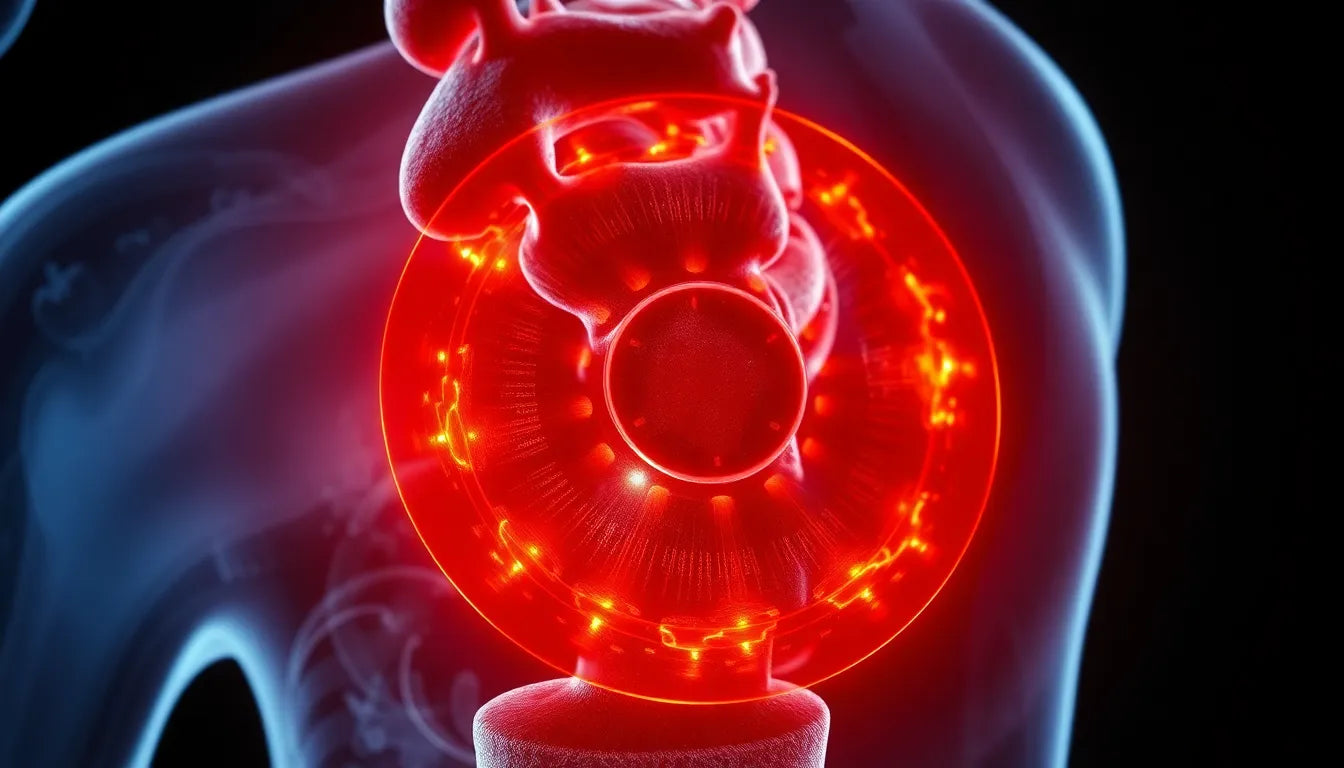A herniated disc is a common spinal condition that occurs when the soft inner gel of a spinal disc pushes through a crack in the tougher exterior. This can lead to pain, numbness, or weakness in an arm or leg. Flare-ups of a herniated disc can be particularly challenging, as they often bring about sudden and intense symptoms that can disrupt daily life. Understanding why these flare-ups occur is crucial for anyone dealing with spinal issues. They are typically triggered by activities that place additional stress on the spine, such as heavy lifting, sudden movements, or even prolonged periods of inactivity.
Herniated disc flare-ups are a frequent concern among individuals with spinal problems, often leading to significant discomfort and limited mobility. These flare-ups can vary widely in duration and intensity, making it essential for those affected to grasp the timeline and management strategies involved. By understanding the typical duration of herniated disc flare-ups, individuals can better prepare for and manage these episodes, ultimately aiding in a smoother recovery process.
Objective of the post
The primary purpose of this post is to provide a comprehensive overview of how long herniated disc flare-ups last and the factors that influence their duration. By delving into the typical timeline of these flare-ups, we aim to equip readers with the knowledge needed to better manage their symptoms and enhance their recovery journey. This information is particularly valuable for those seeking to understand the stages of recovery, the symptoms they might experience, and the treatment options available to them.
In the sections that follow, we will explore the various stages of recovery from a herniated disc flare-up, detailing the symptoms associated with each phase and offering insights into effective treatment strategies. By providing a clear picture of what to expect, we hope to empower individuals to take proactive steps in managing their condition, ultimately leading to improved outcomes and a higher quality of life.
duration and influencing factors of herniated disc flare-ups
Herniated disc flare-ups can vary significantly in duration, typically lasting anywhere from a few days to several weeks. The length of a flare-up is influenced by several factors, including the severity of the herniation, the individual's overall health, and their adherence to prescribed treatment plans. Understanding these factors can help individuals manage their expectations and take proactive steps toward recovery.
Firstly, the severity of the herniation plays a crucial role. A minor herniation may resolve more quickly, while a more severe case could prolong the flare-up. Additionally, an individual’s overall health and fitness level can impact recovery. Those who maintain a healthy lifestyle, including regular exercise and a balanced diet, may experience shorter flare-ups due to better overall physical resilience.
Adherence to treatment plans and lifestyle modifications is another critical factor. Following medical advice, engaging in physical therapy, and making necessary lifestyle adjustments can significantly influence the duration of a flare-up. For instance, avoiding activities that strain the spine and incorporating ergonomic aids can prevent exacerbation of symptoms.
recovery stages and symptoms of herniated disc flare-ups
acute inflammation stage (1-2 days to 2 weeks)
The initial phase of a herniated disc flare-up is marked by acute inflammation, typically lasting from 1-2 days up to 2 weeks. During this stage, individuals often experience intense pain, limited mobility, and possibly numbness or tingling in the affected areas. Immediate rest and effective pain management are crucial during this period to prevent further injury and begin the healing process.
gradual improvement stage (2-6 weeks)
Following the acute phase, the gradual improvement stage spans approximately 2 to 6 weeks. In this phase, individuals may notice a reduction in pain and an improvement in mobility. Physical therapy becomes particularly beneficial during this time, as it helps strengthen the muscles supporting the spine and promotes a gradual return to normal activities. Consistent participation in prescribed exercises can significantly aid recovery and reduce the risk of future flare-ups.
plateau and stabilization stage (6-12 weeks)
As recovery progresses into the plateau and stabilization stage, typically from 6 to 12 weeks, symptoms begin to stabilize. During this time, maintaining physical therapy and continuing with lifestyle adjustments are essential to prevent relapse. Although symptoms may be less intense, there is still a risk of flare-ups if care is not taken. Ongoing management and adherence to therapeutic exercises remain vital.
long-term management (beyond 12 weeks)
Beyond 12 weeks, individuals enter the long-term management phase. This stage emphasizes the importance of continued vigilance and lifestyle modifications to prevent future flare-ups. Regular exercise, maintaining a healthy weight, and using ergonomic aids are critical components of long-term management. By adopting these practices, individuals can significantly reduce the likelihood of experiencing recurrent flare-ups and enhance their overall spinal health.
symptoms and treatment options for herniated disc flare-ups
During a herniated disc flare-up, common symptoms include pain, numbness, tingling, and muscle weakness. Addressing these symptoms promptly can help alleviate discomfort and promote recovery. Several treatment options are available, each with its own benefits:
| Treatment Option | Description |
|---|---|
| Ice and heat therapy | Applying ice can reduce inflammation, while heat can relax muscles and improve blood flow. |
| Over-the-counter pain medications | Non-prescription pain relievers can help manage pain and inflammation during flare-ups. |
| Physical therapy exercises | Customized exercises strengthen the spine-supporting muscles and improve flexibility. |
| Lifestyle adjustments | Incorporating ergonomic aids and correcting posture can prevent further strain on the spine. |
By understanding the timeline and symptoms of herniated disc flare-ups, individuals can take informed steps to manage their condition effectively. Early intervention and adherence to treatment plans are key to reducing flare-up duration and enhancing overall recovery.
Effective management strategies for herniated disc flare-ups
Successfully managing herniated disc flare-ups requires a combination of timely intervention and a personalized treatment approach. Early intervention is crucial in reducing the duration and severity of flare-ups. This involves promptly addressing symptoms with appropriate therapies and modifications to daily activities. Seeking professional guidance is essential to tailor a treatment plan that meets individual needs and promotes optimal recovery.
Healthcare professionals can offer valuable insights into effective management strategies, including physical therapy regimens, medication, and lifestyle adjustments. Physical therapists, for instance, can design exercise programs that strengthen the core and back muscles, enhancing spinal support and reducing the risk of future flare-ups. Additionally, alternative therapies such as acupuncture and chiropractic care have shown potential benefits in alleviating pain and improving mobility for some individuals.
Visual aids and personal experiences
Incorporating visual aids can significantly enhance understanding of herniated disc flare-ups. Diagrams illustrating the anatomy of the spine and the mechanics of a herniated disc can provide clarity on how these flare-ups occur and why they cause specific symptoms. Visual content not only aids comprehension but also engages readers by making complex information more accessible.
Personal stories and case studies can also play a pivotal role in making the information relatable. Hearing from individuals who have successfully managed their herniated disc flare-ups can offer hope and practical insights to those currently facing similar challenges. These narratives can highlight real-world applications of treatment strategies and demonstrate the effectiveness of various approaches in managing symptoms.
Comparative analysis of treatment options
When considering treatment options for herniated disc flare-ups, it's important to compare the effectiveness and potential side effects of each method. Ice and heat therapy, for example, are widely used for their ability to reduce inflammation and relax muscles, respectively. However, they may not address the underlying cause of the flare-up. Over-the-counter pain medications can provide relief but may come with side effects if used long-term.
Physical therapy exercises offer a more sustainable solution by strengthening the supporting muscles and improving flexibility. While this approach requires a commitment to regular sessions, it has the advantage of addressing the root cause of the problem and reducing the likelihood of future flare-ups. Lifestyle adjustments, such as using ergonomic aids and correcting posture, complement these treatments by preventing further strain on the spine.
Frequently asked questions
How can I prevent herniated disc flare-ups?
Preventing herniated disc flare-ups involves adopting a proactive approach to spinal health. Regular exercise, particularly activities that strengthen the core and back muscles, can provide better support for the spine. Maintaining a healthy weight reduces stress on the spinal discs, and using ergonomic aids, such as supportive chairs and proper lifting techniques, can prevent unnecessary strain.
When should I see a doctor for a herniated disc flare-up?
It is advisable to consult a healthcare professional if you experience severe pain, numbness, or weakness that does not improve with initial treatment. Additionally, if you encounter symptoms such as loss of bladder or bowel control, immediate medical attention is necessary, as these could indicate a more serious condition.
Can lifestyle changes really help in managing herniated disc symptoms?
Yes, lifestyle changes can significantly impact the management of herniated disc symptoms. Incorporating regular physical activity, maintaining a balanced diet, and ensuring proper posture can enhance recovery and reduce the frequency and severity of flare-ups. These changes promote overall spinal health and resilience.
Are there any specific exercises to avoid during a flare-up?
During a flare-up, it is important to avoid exercises that put excessive strain on the spine, such as heavy weightlifting, high-impact activities, and movements that involve twisting or bending the back. Instead, focus on low-impact exercises like walking, swimming, or cycling, and consult a physical therapist for guidance on safe and effective exercises tailored to your condition.


















